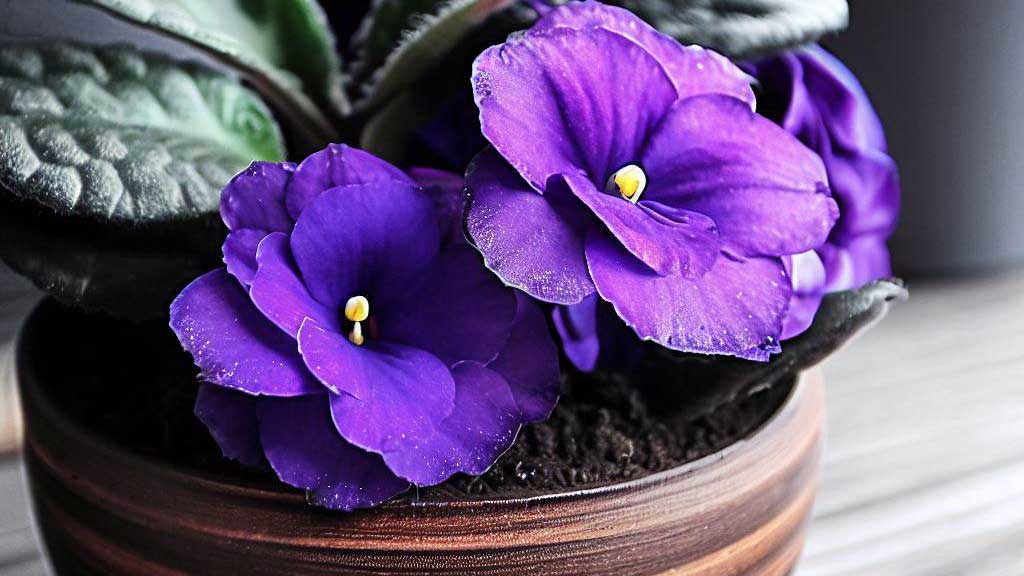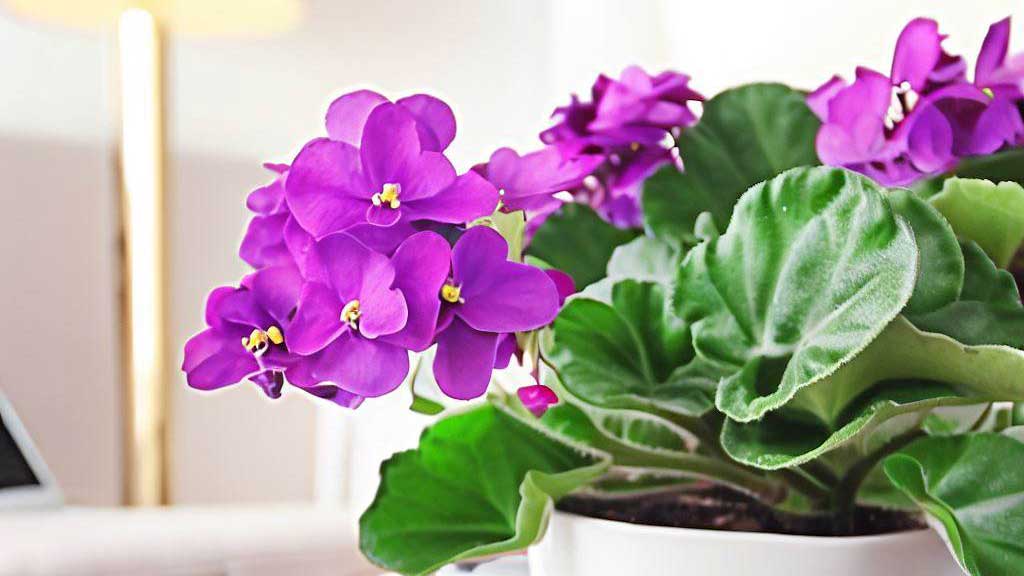Where is the best place to put an African violet
African Violet, in addition to its beautiful appearance and attractive colors, requires sensitive care and is one of the most popular and best indoor plants. It is also known as the “bride” of indoor plants. The recognition of this plant was first done by Saintpaulias, and it belongs to the tropical regions of Africa, specifically Tanzania, and parts of Kenya.
African Violet produces beautiful flowers in shades of purple, white, pink, magenta, and burgundy, with dark green velvety leaves. In some varieties, the edges of the leaves have a lighter color, adding extraordinary beauty and attractiveness to the plant. Here we want to discuss the where is the best place to put an African Violet so the place should have the best temperatures and other conditions that we will mention in this article
| Species | Best Place to Put African Violet |
|---|---|
| Saintpaulia ionantha | Bright, indirect light |
| Saintpaulia rupicola | Partial shade or filtered light |
| Saintpaulia goetzeana | Bright, indirect light with some shade |
| Saintpaulia confusa | Bright, indirect light or some morning sun |
| Saintpaulia pusilla | Bright, indirect light or filtered light |
| Saintpaulia schlecteri | Bright, indirect light with some shade |
Care for African Violet in the best place
African Violet is a sensitive plant, but with sufficient knowledge and proper care, it won’t be difficult, and you will witness and own a healthy plant with continuous and beautiful flowers
for more information read How to care for African violets indoors?
[blockquote author=”African Violet Society of America” link=”https://africanvioletsocietyofamerica.org/science-research/#toggle-id-1″ target=”_blank”]Early specimens of African violets had been collected by Sir John Kirk on the coast “opposite Zanzibar” in 1884, and by the Rev. W.E. Taylor in the Giryama and Shimba Mountains in 1887.[/blockquote]
Proper and Necessary Watering for African Violet
It is better to allow the roots of the African Violet to dry slightly before watering and avoid overwatering, as it can damage the roots. Place nylon under the pot at room temperature and wait for less than 30 minutes for the plant to absorb water from the bottom. Avoid spraying water on the leaves and water the plant directly. Note that very cold water can cause wilting and leaf spotting.
 The next precaution is to avoid using tap water because it can increase the salt content and ultimately disrupt the pH and electrical conductivity, causing damage and reducing the plant’s ability to absorb necessary nutrients.
The next precaution is to avoid using tap water because it can increase the salt content and ultimately disrupt the pH and electrical conductivity, causing damage and reducing the plant’s ability to absorb necessary nutrients.
Avoiding chlorinated water is also important. While some plants may tolerate chlorine, it can severely damage the leaves and inhibit flower production in African Violets. If you only have access to chlorinated water, you can let it sit overnight in a container outside the refrigerator to allow the chlorine to dissipate.
Additionally, there are devices designed specifically for watering, where you pour an adequate amount of water into it and place it inside the pot. This device waters the plant according to its needs at the appropriate time. With the use of this device, your plants require less attention and care in terms of watering.
The ideal soil for African Violets is a well-prepared potting mix, and the best choice for pots is plastic pots. African Violets are highly sensitive to cold air and excessive cold can cause their demise. Plastic pots do not absorb cold temperatures and help maintain a balanced root environment.
 Not all types of fertilizers are suitable for African Violets, and it is important to use fertilizers specifically formulated for this plant. The ideal fertilizer should be urea-free, as urea can cause root burn and death. Suitable fertilizers for growth and nutrition include those containing iron and manganese. Alternatively, you can use a diluted fertilizer with high phosphorus after watering. It’s also important to note that the soil should be washed once every 2 to 3 months. Soil washing involves allowing water to completely drain from the bottom of the pot.
Not all types of fertilizers are suitable for African Violets, and it is important to use fertilizers specifically formulated for this plant. The ideal fertilizer should be urea-free, as urea can cause root burn and death. Suitable fertilizers for growth and nutrition include those containing iron and manganese. Alternatively, you can use a diluted fertilizer with high phosphorus after watering. It’s also important to note that the soil should be washed once every 2 to 3 months. Soil washing involves allowing water to completely drain from the bottom of the pot.
The optimal humidity for the growth and maintenance of African Violets is higher than the typical household humidity. In their native habitat, humidity is usually around 70 to 80 percent, which is not practical to achieve indoors. Aim to maintain humidity levels around 50 to 60 percent.

Methods to increase humidity include using artificial humidifiers. One of these methods is to place the pot on a tray filled with pebbles. This prevents the roots from sitting in water.
Another method is to cluster several African Violets together without their leaves touching. This grouping can increase humidity by about 15 percent.
Another method is to use a humidifier throughout all seasons.
The optimal temperature for the growth and maintenance of African Violets is between 18 to 24 degrees Celsius. Temperatures below 10 degrees Celsius can result in plant and flower death. Maintain a balanced temperature, as excessive heat or cold can cause serious damage such as excessive elongation of the plant, drying out, and flower dropping.
Providing adequate light for African Violets is crucial. The plant’s health is directly related to the appropriate and moderate amount of light it receives. South or east-facing windows are suitable locations for the plant. The plant absorbs sunlight and converts carbon, hydrogen, and carbon dioxide into a form of nutrition called carbohydrates and plant energy.
if you want to know how to bloom the african violet read How do I get my African Violet to bloom again?
It’s important to note that even if all the necessary and important factors are provided for the plant, insufficient light will result in starvation.
Insufficient light in African Violets can lead to a halt in flowering and changes in leaf color. Due to the difference in light intensity in different seasons, the plant requires more direct light in the winter season.
Where is the best place to put an African violet
Therefore, the best way to care for an African Violet is to place the pot behind a window where it can receive indirect sunlight throughout the day. If the summers in your area have intense sunlight, try to move it to a different location when you notice the first signs of sunburn, usually starting with leaf scorching.
Leaf Curling and Dryness: It could be caused by the warm and dry environment and the need for watering. So, make the environment slightly humid without using misting.
- Brown Spots on Leaves
Spraying in direct sunlight or overhead watering is the cause. The plant does not need spraying, and watering should be done according to the mentioned method.
- Leaf Withering
Air conditioning is the cause of leaf withering and dropping. To treat it, promptly move the plant to a warmer location.
Tip or Marginal Leaf Dryness
Leaf burn caused by excessive fertilizer, soil salinity, salt accumulation, and pH issues can lead to these deficiencies.
- Leaf Shriveling
If the plant’s leaves become shriveled and abundant, it indicates the need to report. Carefully transfer the plant to a new pot.
- Faded Flowers
The cause of this problem is spraying. Stop spraying and choose other methods to provide moisture.
Stem and Flower Rot: Overwatering has caused this issue. Immediately remove the plant from the leaves.
Conclusion
In this article we discussed where is the best place to put an African violet, we discussed how the places have to have some conditions to be growing.











